
Dokkum (Fr): Bonifatiuskapel (H.W. Valk, 1934)
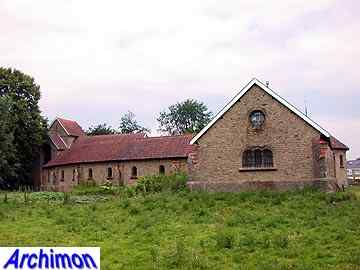 In the
year 754 Boniface, bishop of Mainz, was murdered near Dokkum. The place
where it happened became known as Martelaarsveld ('Martyr's field') and
attracted many pilgrims, also because of its spring, the water of which
was believed to be medicinal. The yearly pilgrimages continued until
the reformation in 1580, but individual pilgrims visited the place for
another century. A first revival of the pilgrimages occurred in 1875,
but this lasted for only a decade and was mostly a Frisian occassion.
In 1919 a piligrimage by bicycle was organized. A permanent revival
started in 1925, with the founding of the St. Bonifatius Stichting
('St. Boniface Foundation'), which had as its goal to make Dokkum a
real place of pilgrimage again. The same year a procession-parc was
built at the Martelaarsveld, designed by architect Wolter te Riele. In
1926 the first national pilgrimage was held. Te Riele had also designed
a big chapel, but apart from its foundations it was not built. His
former student H.W. Valk, who had made an alternative design free of
charge, was assigned to build the chapel instead. Work started in
February 1934, six months later it was completed. The design of the
chapel was obviously inspired by Romanesque architecture. It has a
semi-oval ground-plan, closed by a straight line. A 300 metres long
passageway follows the contours of the chapel, broken only by the
entrance and the choir. Benches are placed in tiers, like in an
amphitheatre, allowing a good view on the choir. All spaces are covered
by a wooden roofconstruction on arches of brick, except for the choir
which has stone vaulted. Only the centre of the chapel is uncovered.
In the
year 754 Boniface, bishop of Mainz, was murdered near Dokkum. The place
where it happened became known as Martelaarsveld ('Martyr's field') and
attracted many pilgrims, also because of its spring, the water of which
was believed to be medicinal. The yearly pilgrimages continued until
the reformation in 1580, but individual pilgrims visited the place for
another century. A first revival of the pilgrimages occurred in 1875,
but this lasted for only a decade and was mostly a Frisian occassion.
In 1919 a piligrimage by bicycle was organized. A permanent revival
started in 1925, with the founding of the St. Bonifatius Stichting
('St. Boniface Foundation'), which had as its goal to make Dokkum a
real place of pilgrimage again. The same year a procession-parc was
built at the Martelaarsveld, designed by architect Wolter te Riele. In
1926 the first national pilgrimage was held. Te Riele had also designed
a big chapel, but apart from its foundations it was not built. His
former student H.W. Valk, who had made an alternative design free of
charge, was assigned to build the chapel instead. Work started in
February 1934, six months later it was completed. The design of the
chapel was obviously inspired by Romanesque architecture. It has a
semi-oval ground-plan, closed by a straight line. A 300 metres long
passageway follows the contours of the chapel, broken only by the
entrance and the choir. Benches are placed in tiers, like in an
amphitheatre, allowing a good view on the choir. All spaces are covered
by a wooden roofconstruction on arches of brick, except for the choir
which has stone vaulted. Only the centre of the chapel is uncovered.
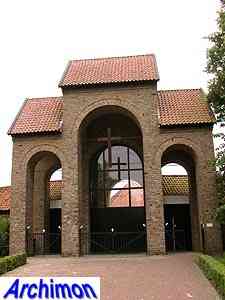
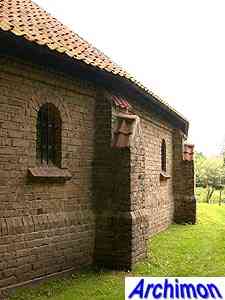
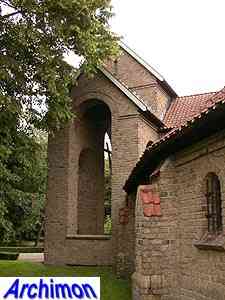
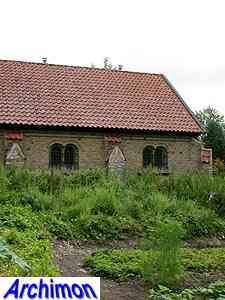
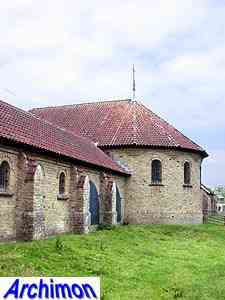
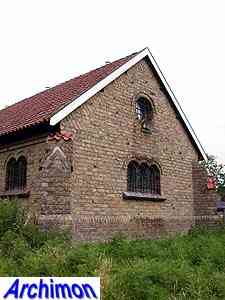
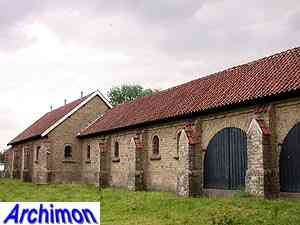
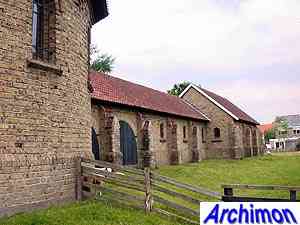
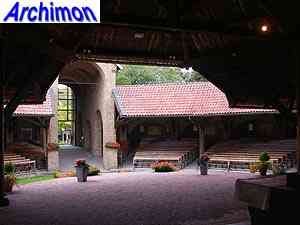
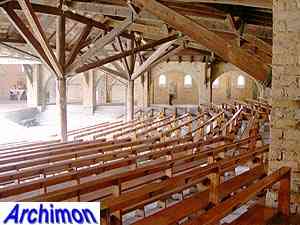
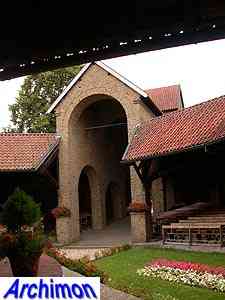
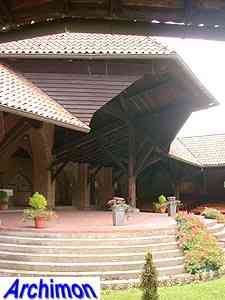
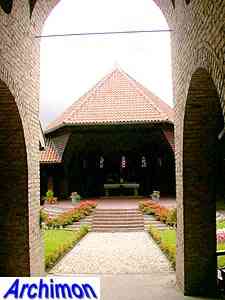
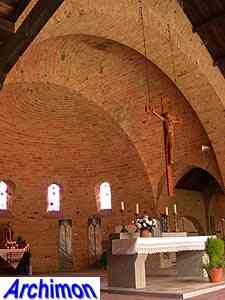
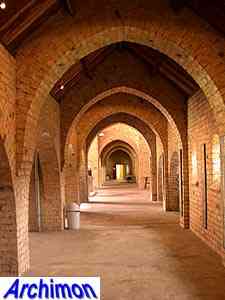
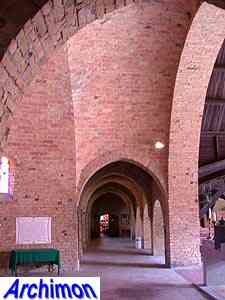
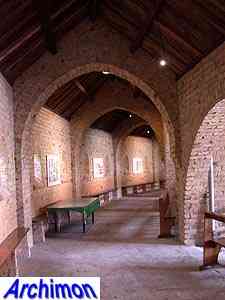
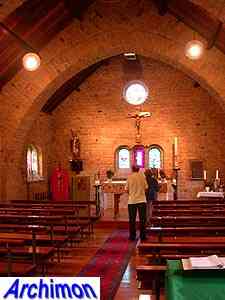
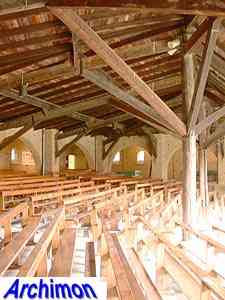
Back to Dokkum
Back to H.W. Valk